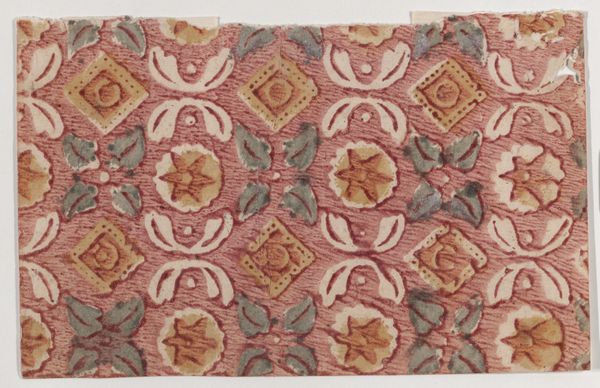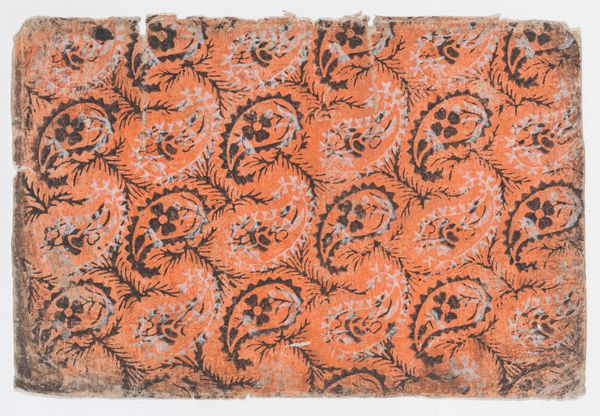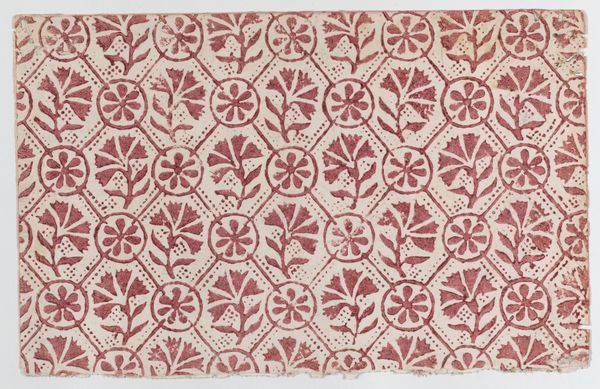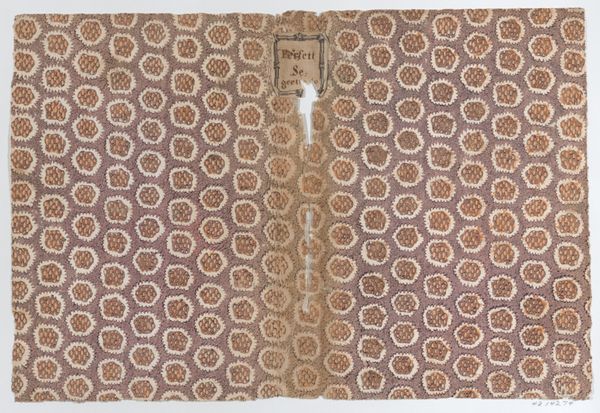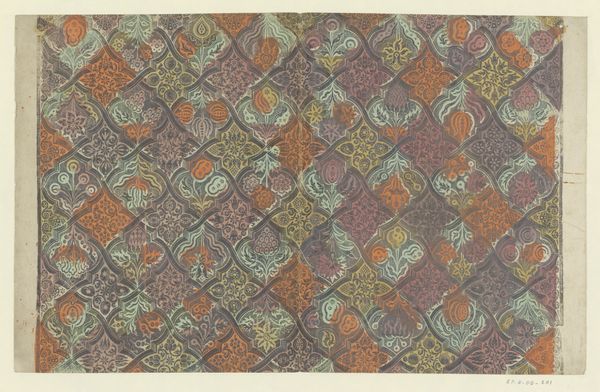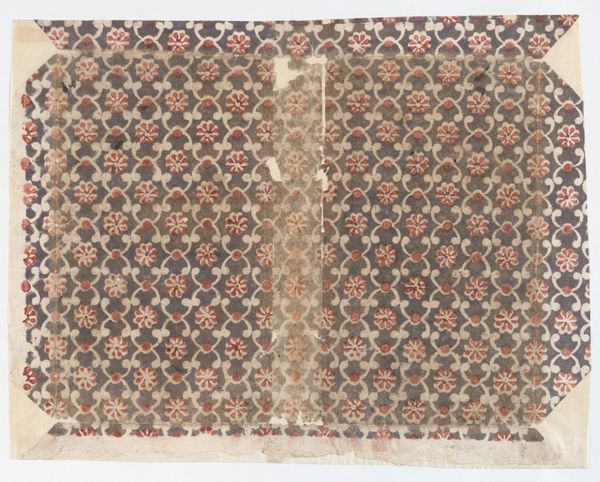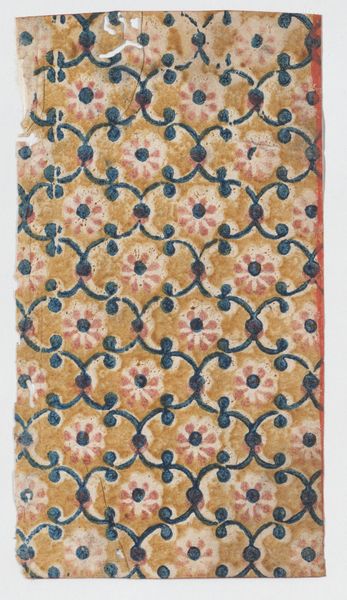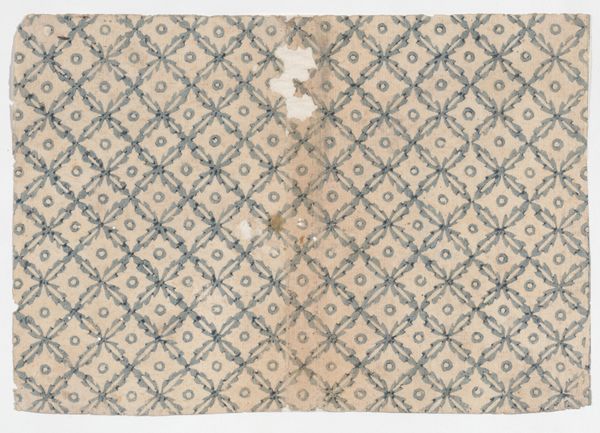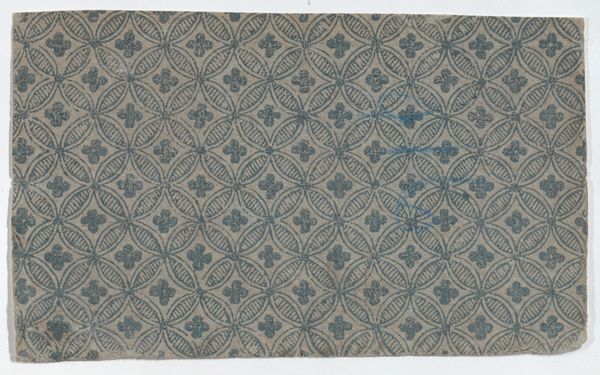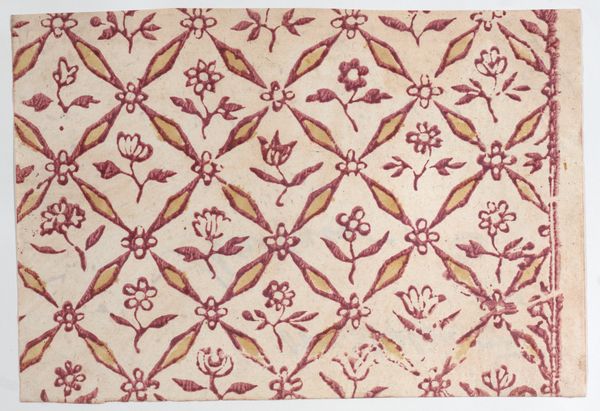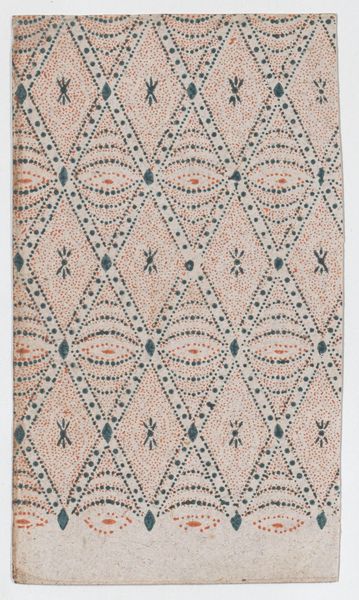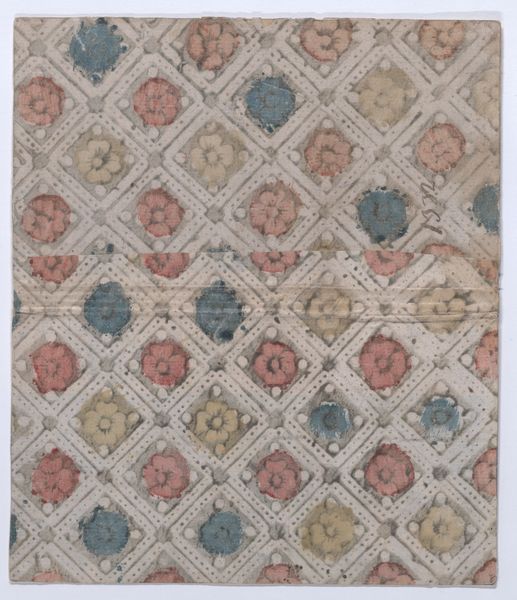
#
organic
# print
#
geometric pattern
#
organic pattern
#
geometric
#
flower pattern
#
pattern repetition
#
decorative-art
Dimensions: Sheet: 6 15/16 × 4 1/4 in. (17.7 × 10.8 cm)
Copyright: Public Domain
Curator: This pattern, made with drawing and print techniques, repeats orange rosettes set inside diamond shapes outlined in light gray dotted lines. I’d describe it as warm, inviting. There’s an intimate feel. Editor: It does evoke a sense of domesticity, doesn’t it? We’re looking at "Sheet with overall pattern of rosettes," made anonymously between 1800 and 1900. It now resides here at The Met. And you're right about that sense of 'home' — it very much falls within the Pattern and Decoration movement. This movement really sought to challenge the hierarchy that placed decorative arts below fine art. Curator: Absolutely, and viewing this through a feminist lens, it's easy to see how this elevation of craft challenges the long-standing patriarchal art historical narratives that dismissed “women’s work” as lesser. I wonder about the labor involved in creating such intricate repetition. Editor: That’s key. This piece reminds us to look beyond the purely aesthetic and examine the socio-economic structures at play in its creation. Were these patterns intended for the elite, a signifier of wealth and taste, or were they aimed at a burgeoning middle class seeking accessible beauty? Curator: The use of the rosette motif is fascinating too. Historically, flowers symbolize various ideas, from love and beauty to fragility and the ephemeral nature of life. Here, their stylization transforms them into building blocks of a larger system. Are we meant to find freedom within order, or are we meant to reflect upon restriction? Editor: Thinking of the political symbolism inherent in floral patterns, which we see across cultures and historical periods, brings in another layer of depth. This work, despite its simplicity, allows us to question the role of art in society. How does it influence and reflect the values and ideologies of its time? Curator: Exactly. It's not just about appreciating a pretty pattern, is it? Editor: Never is. Even the most seemingly innocuous design holds the potential for deep exploration and critique. What begins as a pleasant sight can open paths into understanding a culture's artistic traditions, economic forces, and systems of social hierarchy. Curator: A wonderful reminder that we bring our own stories and perspectives to every encounter with art, seeing ourselves within it and recognizing art’s impact on broader cultural conversations. Editor: And isn't that precisely where the beauty lies – in the continual questioning, contextualization, and renewed understanding?
Comments
No comments
Be the first to comment and join the conversation on the ultimate creative platform.
